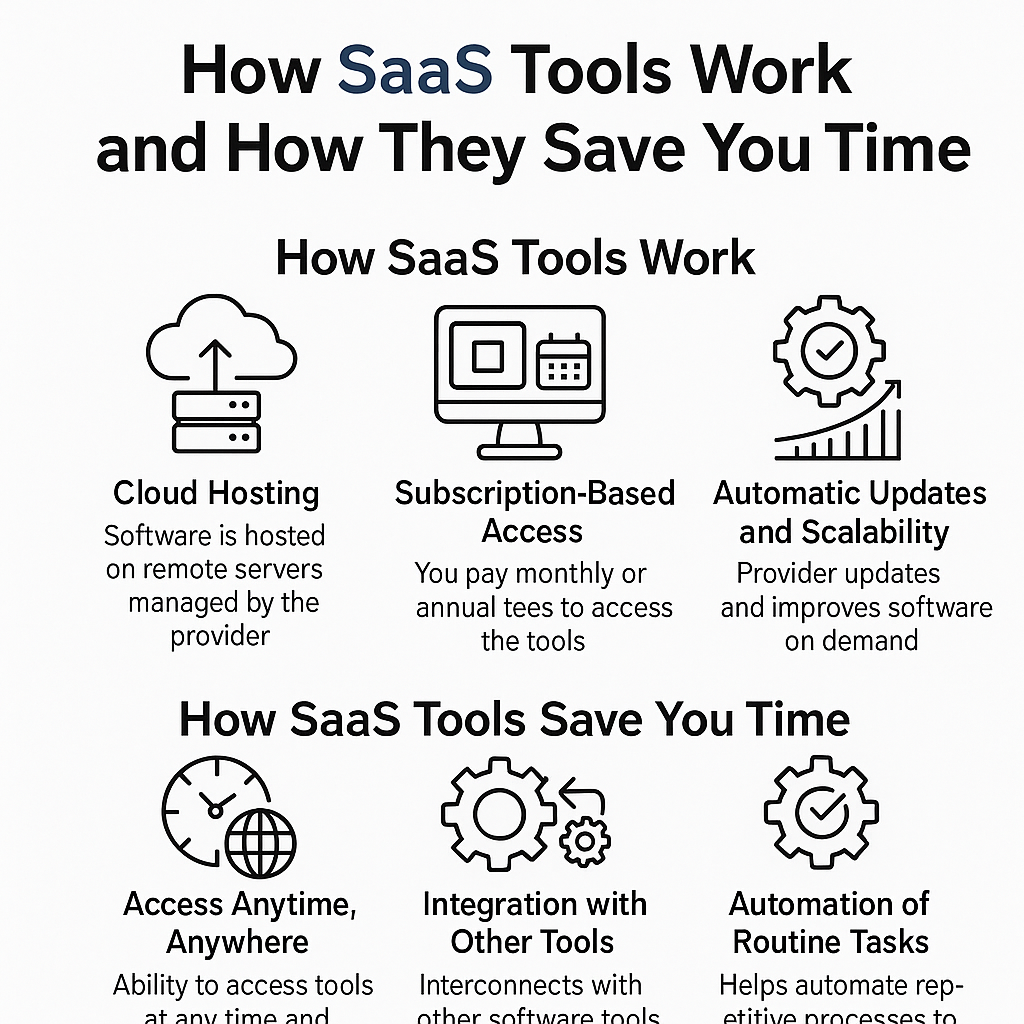
In today’s fast-paced world, businesses and individuals are constantly looking for ways to boost productivity and cut down on repetitive tasks. One of the biggest game-changers in this space has been SaaS (Software as a Service) tools. If you’ve ever used Google Workspace, Slack, Canva, or Trello, you’ve already experienced SaaS in action. But how exactly do these tools work, and why are they such powerful time-savers? Let’s break it down.
What Are SaaS Tools?
SaaS stands for Software as a Service. Unlike traditional software that you buy, download, and install on your computer, SaaS tools are hosted on the cloud and accessed via the internet. Think of it as “renting” software rather than owning it outright.
With SaaS, you don’t need to worry about updates, maintenance, or storage—everything is handled by the provider. All you need is an internet connection, and you’re ready to go.
How SaaS Tools Work
At their core, SaaS tools operate on three simple principles:
- Cloud Hosting
The software lives on remote servers managed by the provider. This ensures you can access it anytime, anywhere, on any device. - Subscription-Based Access
Instead of a hefty one-time payment, you typically pay a monthly or yearly subscription. This makes enterprise-level tools affordable even for small businesses or freelancers. - Automatic Updates and Scalability
Providers continuously improve the software, releasing new features and fixing bugs behind the scenes. As your needs grow, you can easily scale up without complex installations.
How SaaS Tools Save You Time
Here’s where the real magic happens. SaaS isn’t just about convenience—it’s about efficiency.
- Automation of Routine Tasks
Tools like Zapier or HubSpot automate repetitive processes (like sending emails, updating spreadsheets, or syncing data). What used to take hours can now take minutes—or even seconds. - Real-Time Collaboration
Forget the endless email chains. With SaaS platforms like Google Docs or Notion, multiple people can work on the same file simultaneously, seeing updates instantly. - Integration with Other Tools
Most SaaS tools “talk” to each other. For example, Trello can connect with Slack, Gmail, and Zoom. This means no more switching between 10 different apps to get one job done. - Access Anytime, Anywhere
Since SaaS tools live in the cloud, you can pick up right where you left off—whether you’re at your desk, on your phone, or halfway around the world. - Focus on Core Work
By offloading technical headaches (like software updates or server maintenance) to the provider, you and your team can stay focused on what really matters—your business goals.
Real-Life Examples of Time Saved
- Sales teams save hours with CRM tools like Salesforce that automatically track leads, send follow-ups, and generate reports.
- Designers create professional-quality graphics quickly using Canva without needing advanced Photoshop skills.
- Teachers and students collaborate seamlessly on Google Classroom, cutting down on printing, emailing, and manual grading.
Final Thoughts
SaaS tools aren’t just another tech trend—they’re a fundamental shift in how we work. By moving software to the cloud and making it accessible, automated, and collaborative, SaaS solutions free up your most valuable resource: time.
If you’re still bogged down with outdated processes or juggling too many manual tasks, it may be time to explore SaaS tools that can streamline your workflow and give you back hours each week.
